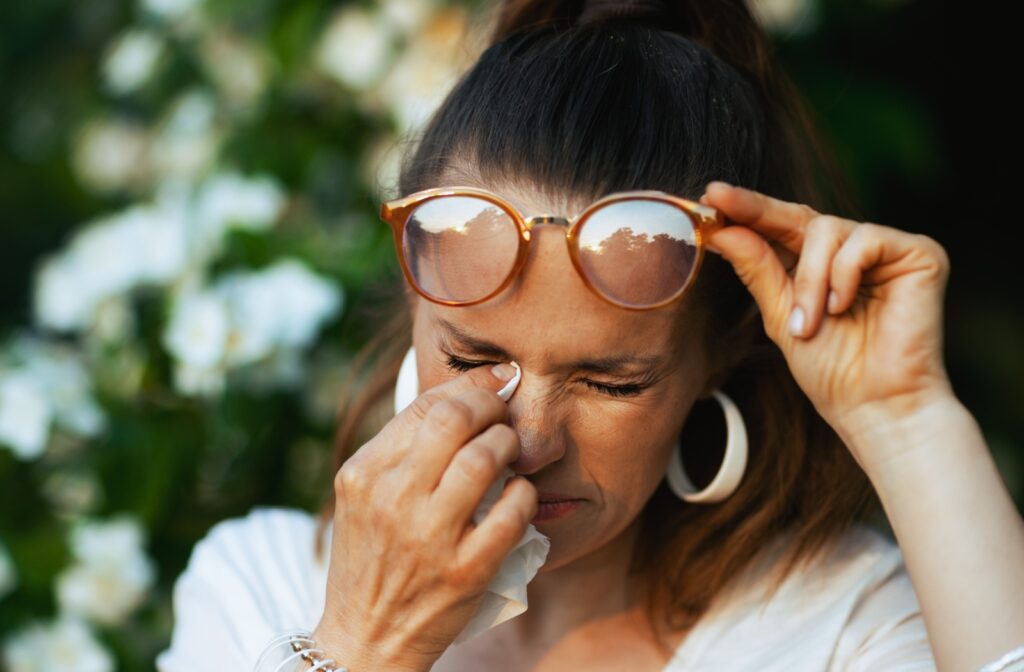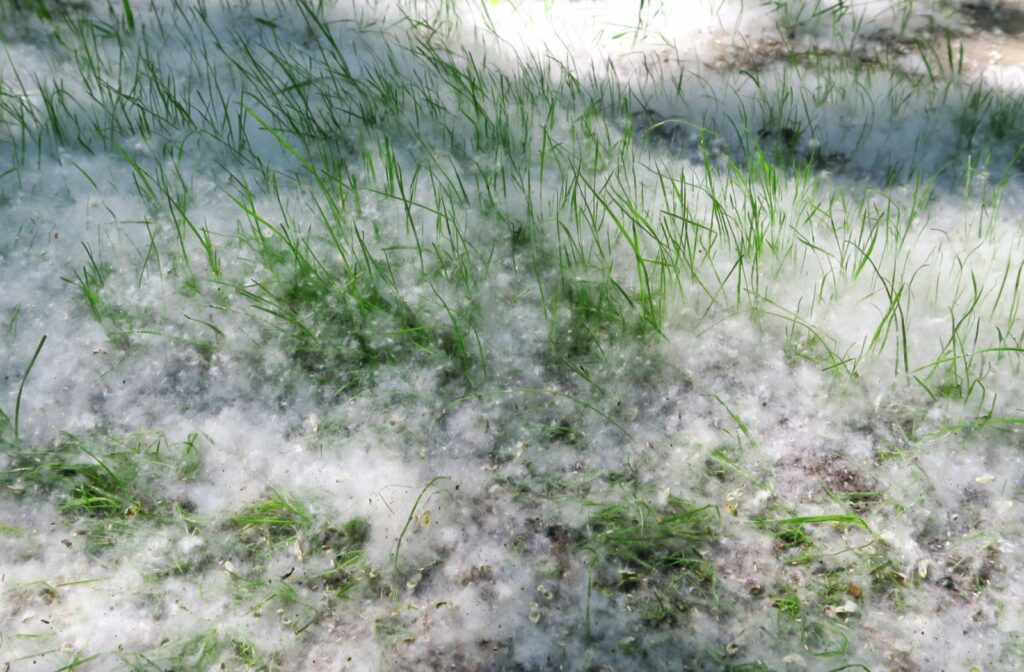Is that snow in the summer? Nope, the cottonwood trees are at it again—and they’re bringing the annual runny nose and itchy eyes that we expect.
If you’ve been experiencing itchy, watery, or dry eyes, you might be wondering whether it’s due to seasonal allergies or something else, like dry eye syndrome. Understanding these conditions (and the differences) can help you manage your symptoms more effectively and improve your overall eye health. Dry eye and seasonal allergies can share some common characteristics, so it’s not always obvious which you’re experiencing.
It may be a good idea to book an appointment with your eye doctor if over-the-counter (OTC) treatments aren’t providing relief and you can’t pinpoint the cause of your symptoms. Your eye doctor can examine your eyes to determine what’s going on and offer advice.
Understanding the Difference Dry Eye vs. Allergies
Dry eye syndrome and allergic conjunctivitis are two common eye conditions that can cause similar symptoms. However, they’re distinct in their causes and treatments.
What is Dry Eye Syndrome?
Dry eye syndrome occurs when your eyes don’t produce enough tears or when the tears evaporate too quickly. This leads to a lack of lubrication and moisture on the eye’s surface, causing discomfort. Symptoms can include:
- A gritty or sandy feeling in the eyes
- Redness and irritation
- Blurred vision
- Sensitivity to light
What is Allergic Conjunctivitis?
Unlike dry eye, allergic conjunctivitis is an inflammation of the conjunctiva (the clear tissue covering the white part of the eye) caused by allergens. Common symptoms include:
- Itching and burning sensation in the eyes
- Watery discharge
- Swelling of the eyelids
- Redness and irritation
Can Allergies Cause Dry Eye?
While dry eye syndrome and allergic conjunctivitis are different conditions and don’t necessarily cause one another, there is an overlap, and allergies can aggravate dry eye symptoms.
Allergens such as pollen, dust, and pet dander can destabilize the tear film, the thin layer of tears that cover the eye’s surface. This instability can lead to increased evaporation of tears, contributing to dry eye symptoms.
Factors Contributing to Both Conditions
Several factors can contribute to the development of both dry eye and allergic conjunctivitis, including:
- Environmental factors such as dry air, wind, and pollution
- Prolonged screen time and reduced blinking
- Certain medications, such as antihistamines and decongestants
- Underlying health conditions like rheumatoid arthritis and diabetes

Identifying Your Condition
Differentiating between dry eye syndrome and allergic conjunctivitis can be challenging, but certain tips can help you identify which condition you might have.
Recognizing Symptom Patterns
Pay attention to when and how your symptoms occur. If your symptoms flare up during specific seasons or after exposure to certain allergens, you might be dealing with allergies. But if your symptoms persist regardless of environmental changes, dry eye syndrome could be the culprit.
Environmental Triggers
Consider your exposure to common allergens such as pollen, dust, and pet dander. If you notice your symptoms worsening after spending time outdoors or around pets, allergies are likely to blame.
Medical History & Consultation
Think about your medical history and any underlying conditions that might contribute to dry eye syndrome. Consulting with an eye care professional can provide a definitive diagnosis and guide you towards the appropriate treatment.
Managing and Treating Dry Eyes & Allergies
Whether you’re dealing with dry eyes, allergies, or both, several strategies can help alleviate your symptoms and improve your eye health.
Home Remedies & Lifestyle Changes
Simple lifestyle adjustments can make a significant difference in managing your symptoms:
- Maintain humidity: Use a humidifier to keep the air in your home moist, especially during dry seasons.
- Take breaks from screens: Follow the 20-20-20 rule—every 20 minutes, take a 20-second break and look at something 20 feet away.
- Stay hydrated: Drink plenty of water to ensure your body and eyes stay hydrated.
- Avoid allergens: Keep your living space clean and free of dust and allergens. Use air purifiers to reduce airborne irritants.
Medical Treatments & Over-the-Counter Options
For more persistent symptoms, various treatments are available:
- Artificial tears: Over-the-counter artificial tear drops can provide immediate relief by lubricating the eyes.
- Antihistamine eye drops: These can help reduce itching and swelling caused by allergic conjunctivitis.
- Prescription medications: Your eye doctor may prescribe medications to manage inflammation and promote tear production in severe cases.
- Allergy shots: Immunotherapy can help reduce the severity of allergic reactions over time.
Book an Appointment with Us to Discuss Your Symptoms
Understanding the difference between dry eye syndrome and allergic conjunctivitis is essential for finding the right treatment and improving your quality of life during allergy season and beyond. By recognizing the symptoms and triggers of each condition, you can take proactive steps to manage your eye health.
Whether through simple lifestyle changes or medical treatments, relief is possible. Call our team at Alaska Eye Care Centers today if you’re unsure about your symptoms or need personalized advice. One of our experienced optometrists can examine your eyes and provide treatment options.



